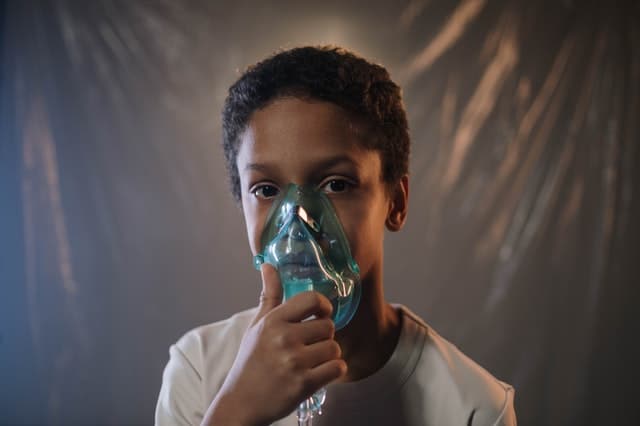FIRST AID – MANAGING AN ELECTRICAL INCIDENT
ELECTRICAL INCIDENTS
When a person is electrocuted, the passage of electrical current through the body may stun him, causing his breathing and heartbeat to stop.
The electrical current can also cause burns both where it enters and where it exits the body to go to “earth” An electrical burn may appear very small or not be visible on the skin, but the damage can extend deep into the tissues.
Factors that affect the severity of the injury are the voltage, the type of current; and the path of the current.
A low voltage of 240 volts is found in a home or workplace, a high voltage of 440 – 1,000 volts is found in industry, and a voltage of more than 1.000 volts is found in power lines.
The type of current will either be alternating (AC) or direct (DC), and the path of the current can be hand-to-hand hand-to-foot, or foot-to-foot. Most low-voltage and high-tension currents are AC, which causes muscular spasms (tetany) and the “locked-on”
phenomenon – the casualty’s grasp is “locked” onto the object preventing him from letting go, so he may remain electrically charged [“live”]. In contrast, DC tends to produce a single large muscular contraction that often throws the person away from the source.
Be aware that the jolt may cause the casualty to be thrown or to fall, resulting in injuries such as spinal injuries and fractures.
 CAUTION
CAUTION
- Do not touch the casualty if he is in contact with the electrical current.
- Do not use anything metallic to break the electrical contact.
- You don’t approach high-voltage wires until the power is turned off.
- Do not move a person with an electrical injury unless he is in immediate danger and is no longer in contact with the electricity.
- If the casualty is unconscious, and it is safe to touch him, open the airway, and check to breathe.
HIGH-VOLTAGE CURRENT
Contact with a high-voltage current found in power lines and overhead cables is usually immediately fatal. Anyone who survives will have severe burns, since the temperature of the electricity may reach up to 5000C [9,032 F].
Furthermore, the shock produces a muscular spasm that propels the casualty some distance, causing additional injuries. High-voltage electricity may jump (“arc”) up to 18m (20yd). The power must be cut off and isolated before anyone approaches the casualty.
A casualty who has suffered this type of shock is likely to be unconscious. Once you have been officially informed that it is safe to approach, assess the casualty, open the airway, and check to breathe.

PROTECT BYSTANDERS
Keep everyone away from the incident. Bystanders should stay at least 18m (20 yds) from the damaged cable and/or casualty.
LOW-VOLTAGE CURRENT
Electrical incident Domestic current, as used in homes and workplaces, can cause serious injury or even death.
Incidents are usually due to faulty switches, frayed flexes, or defective appliances. Young children are at risk since they are naturally curious, and may put fingers or other objects into electrical wall sockets.
Water is also a very efficient conductor of electricity, so it presents additional risks. Handling an otherwise safe electrical appliance with wet hands, or when you are standing on a wet floor, greatly increases the risk of an electric shock.
BREAKING CONTACT WITH THE ELECTRICITY
- Before beginning any treatment, look first, do not touch. If the casualty is still in contact With the electrical source, she will be “live” and you risk electrocution.
- Turn off the source of electricity, if possible, to break the contact between the casualty and the electrical supply. Switch Off the current at the mains or meter point if possible. Otherwise, remove the plug or wrench the cable-free.
- Alternatively, move the source away from both you and the casualty. Stand on some dry insulating material, such as a wooden box, plastic mat, or telephone directory.
- Using a wooden pole or broom, push the casualty’s limb away from the electrical source or push the source away from her.

4. If it is not possible to break the contact using a wooden Object, loop a length of rope around the casualty’s ankles or under the arms, taking great care not to touch her, and pull her away from the Source of the electrical current.
5. Once you are sure that the contact between the casualty and the electricity has been broken, perform a primary survey and treat any condition found. Call 999/112 for emergency help.
LIGHTNING
A natural burst of electricity discharged from the atmosphere, lightning forms an intense trail of light and heat. Lightning seeks contact with the ground through the nearest tall feature in the landscape and, sometimes, through anyone standing nearby.
However, the short duration of a lightning strike usually precludes serious thermal injury. It may, however, set clothing on fire, knock the casualty down or cause the heart and breathing to stop (cardiac arrest).
If cardiopulmonary resuscitation/ CPR is started promptly, many victims survive. Always clear everyone from the site of a lightning strike since it can strike again in the same place.

